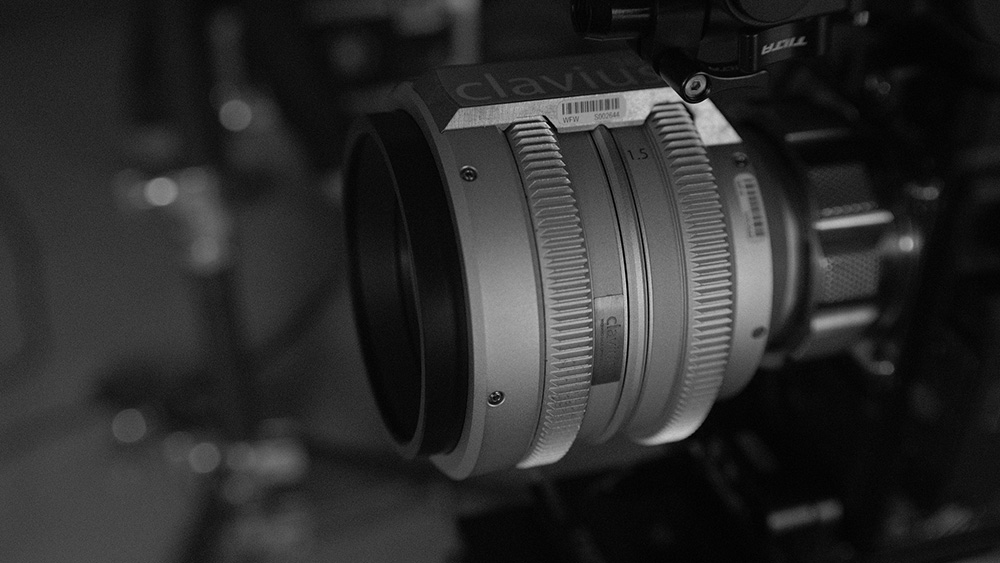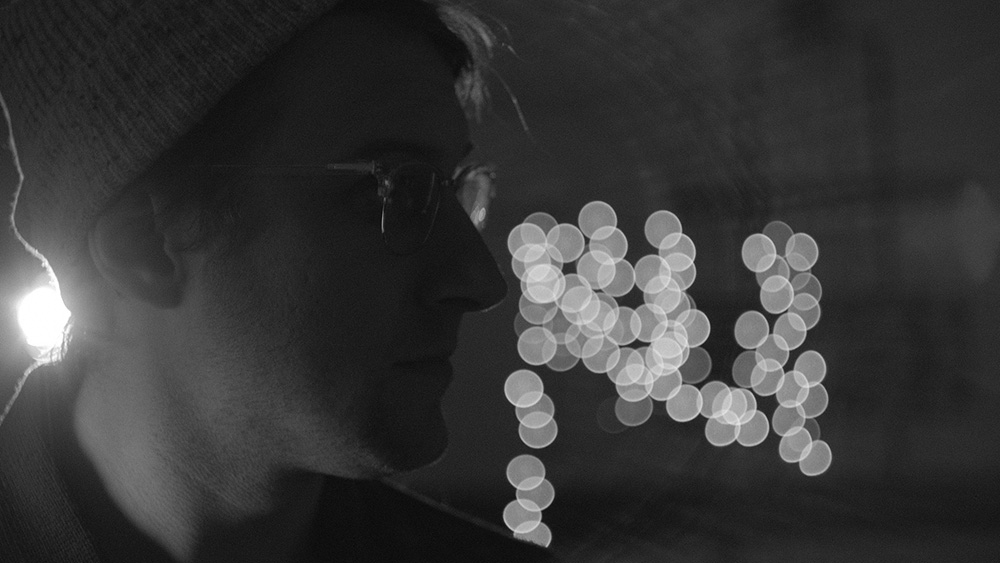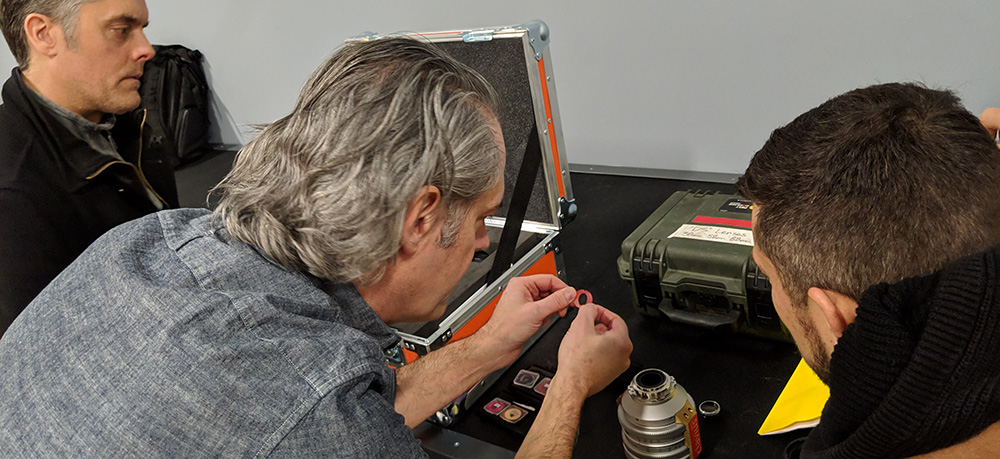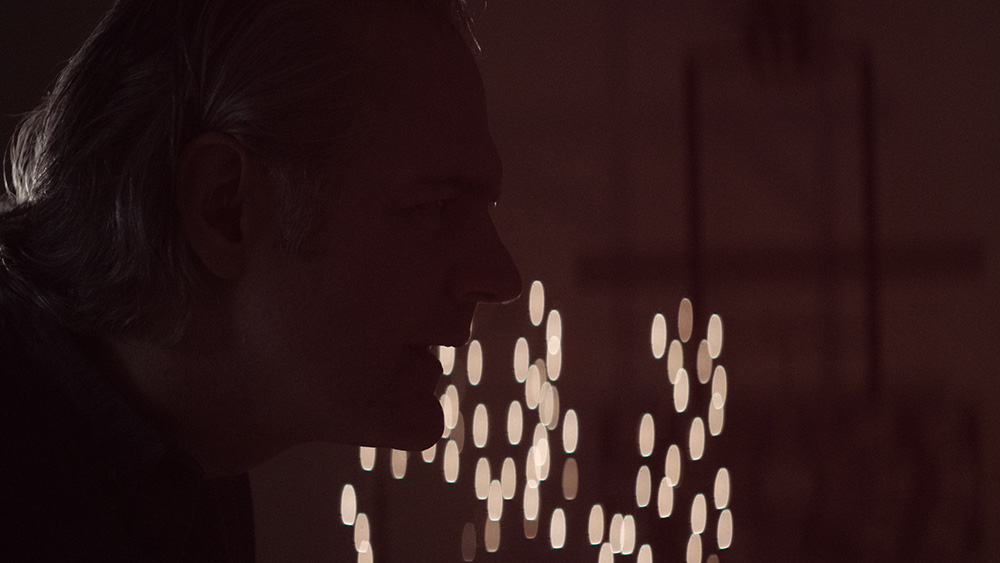This event was sponsored by the CSC and hosted by Whites Camera at their facility in Toronto.
Photos by Justin Lovell, Associate Member
See more here at the Richard Gale Optics website: http://www.richardgaleoptics.uk/clavius-lenses

Back in 2013 I saw some posts about some interesting looking vintage glass that was being rehoused to work with PL mount cameras by Richard Gale Optics out of the UK. I touched base with him and he was taking a few orders for what was then called the FF58 Trump. FF stands for Flare Factory because of the interesting flaring properties. And 58mm was the focal length of the lens at the heart it. A Helios 44 lens which is a Russian series of lenses produced starting in 1958 that were based on the Zeiss Biotar.
That first FF58mm Trump lens was more of a prototype for what was to come. He evolved the line, changing the name from Trump (wonder why?) to the tongue and cheek “Dog Schidt” optics. Notice the German slant to how he spelled “Schidt”. Richard was basically poking fun at the perfection the German’s strive for when making lenses. The idea is that these lenses were not about optical perfection and more about “character”. That said the lenses are remarkably sharp.

He added optical adapters for the “mother” 58mm lens in order to get “focal lengths” of 38mm and 88mm. He rushed me an order in 2016 for a feature film I was prepping. The film Trench 11 was a period piece and we wanted to use some interesting glass. We were also interested in shooting anamorphic but it just wasn’t in the budget. So I suggested we use the Dog Schidt (DS) lenses because Richard had also built in rear “inserts” behind a removable optical block that allowed us to install oval apertures. This gave us oval bokeh shapes characteristic of anamorphic lenses. The other interesting development was that Richard had created different coloured rear optical blocks by lining the insides of these smaller pieces of glass with coloured glass. This created some subtle colour shifts overall and imbued flares with even more colour as light bounced off the coloured sides. For Trench 11 I would use cyan coloured optical blocks for daylight exteriors and amber ones for interiors.
Still – the build of these lenses was not robust. The adapters were a finicky to attach and detach making “lens changes” difficult. There were no focus marks. We had to glue on the correct gauge gears to make remote focus units work. They were a bit of a nightmare in the field!

A year later, Richard recognized this and announced the Apogees. Basically the same optical heart but rehoused in to individual “focal lengths”. I used the Apogees in 2017 on Season 2 of the CTV show Cardinal. Again with oval inserts to create an “anamorfake” look and to get interesting flaring properties.
The build was better. We now had focus gears and marks – but unfortunately they weren’t that reliable. We had F stop markings now. And there were four dedicated lenses in the case – so lens changes were more traditional. But the build was still not as robust as what we are used to on film sets.

Another year later Richard offered a “trade in” with an upgrade fee to existing Apogee owners towards what he promised would be the ultimate build of these lenses – The Clavius. The new build boasts internal focusing, smoother focus action, a geared aperture ring and a far more robust build! In addition to a 28mm lens.
I was surprised that over these many years other DP’s hadn’t really gotten in to these lenses. So I thought I’d set up a demo. The history of these lenses is convoluted so I am sure part of it was that most DP’s had heard of each of these iterations – but didn’t really know what each was and what was so special about these lenses if anything?
https://vimeo.com/405090659/1329213793The demo date was posted and I invited many DP’s who had asked me about the lenses. It was an informal get together at Whites camera. I basically broke down the history of the lenses as described above and their mechanics. We set some lights up and started looking. I have only scratched the surface of what these lenses are capable of. Mainly using the oval shaped inserts to create a fake anamorphic look. But there are dozens of inserts yet to be experimented with. From cheesy heart shaped ones to scalloped quarter moons which we discovered splits part of the image in two as you rack focus. In addition he has eliminated the coloured optical blocks. But there are now coloured rear inserts that also provide “shadow lifts” for experimentation with low contrast looks, combined with colour shifts.

It was a fun session. And seemed to stir some curiosity, although these lenses still remain highly under utilized in my opinion. Not only are they visually interesting, they also cover full frame and are available at an affordable price.
I am always happy to share new and creative discoveries with other DP’s. I think it elevates us all. As we take each other’s ideas to new places, we all benefit from the inspiring results.
Dylan Macleod, csc
